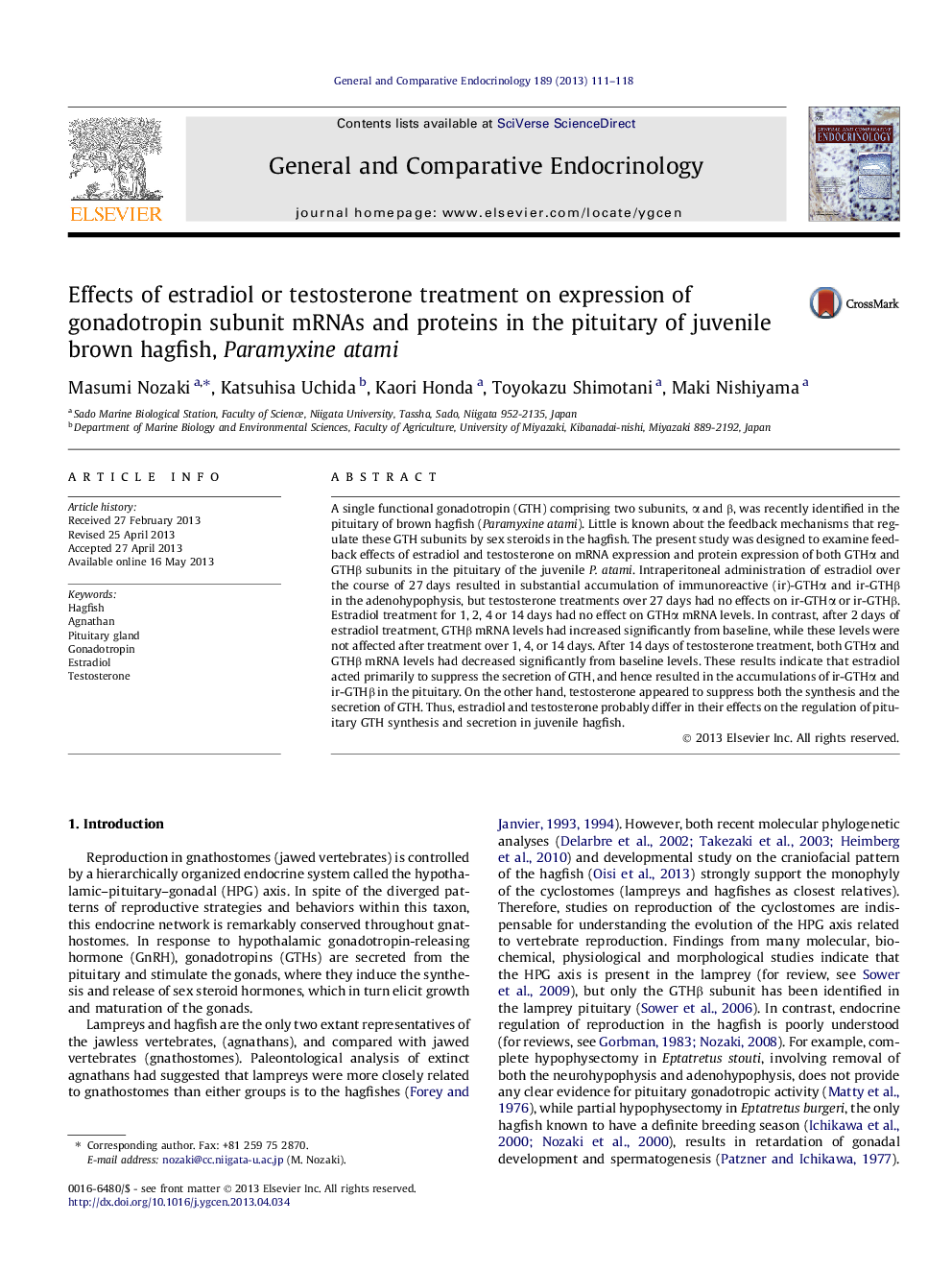| Article ID | Journal | Published Year | Pages | File Type |
|---|---|---|---|---|
| 5901434 | General and Comparative Endocrinology | 2013 | 8 Pages |
â¢Sex steroids regulate hagfish pituitary GTH functions negatively.â¢Estradiol does not suppress GTH mRNA levels, but suppress GTH secretion in hagfish.â¢Testosterone suppresses both mRNA levels and secretion of GTH in hagfish.â¢Hypothalamic-pituitary-gonadal feedback system functions in hagfish.
A single functional gonadotropin (GTH) comprising two subunits, α and β, was recently identified in the pituitary of brown hagfish (Paramyxine atami). Little is known about the feedback mechanisms that regulate these GTH subunits by sex steroids in the hagfish. The present study was designed to examine feedback effects of estradiol and testosterone on mRNA expression and protein expression of both GTHα and GTHβ subunits in the pituitary of the juvenile P. atami. Intraperitoneal administration of estradiol over the course of 27 days resulted in substantial accumulation of immunoreactive (ir)-GTHα and ir-GTHβ in the adenohypophysis, but testosterone treatments over 27 days had no effects on ir-GTHα or ir-GTHβ. Estradiol treatment for 1, 2, 4 or 14 days had no effect on GTHα mRNA levels. In contrast, after 2 days of estradiol treatment, GTHβ mRNA levels had increased significantly from baseline, while these levels were not affected after treatment over 1, 4, or 14 days. After 14 days of testosterone treatment, both GTHα and GTHβ mRNA levels had decreased significantly from baseline levels. These results indicate that estradiol acted primarily to suppress the secretion of GTH, and hence resulted in the accumulations of ir-GTHα and ir-GTHβ in the pituitary. On the other hand, testosterone appeared to suppress both the synthesis and the secretion of GTH. Thus, estradiol and testosterone probably differ in their effects on the regulation of pituitary GTH synthesis and secretion in juvenile hagfish.
